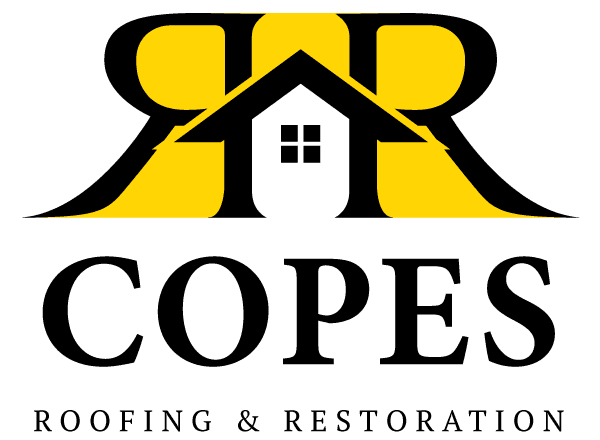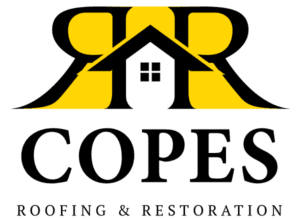When severe weather strikes, hail can be one of the most destructive forces impacting your home’s roof. These frozen pellets, ranging from pea-sized to softball-sized, can cause significant damage that might not be immediately visible to the untrained eye.
Understanding what hail damage looks like on your roof is crucial for protecting your home and ensuring timely insurance claims. This comprehensive guide will help you identify common signs of hail damage and understand when to seek professional assistance.
Understanding Hail Damage
Hail forms when strong updrafts in thunderstorms carry water droplets high into cold atmospheric levels where they freeze. These frozen droplets grow larger as they collide with water droplets, creating layered ice balls. When they become too heavy for the updraft to support, they fall at high speeds—sometimes exceeding 100 mph—creating significant impact force on roofing materials. The combination of size, density, and wind direction during a hailstorm determines the severity and pattern of roof damage.
6 Common Types of Roof Materials and Their Vulnerability
- Asphalt Shingles: The most common residential roofing material, rated on a scale of 1-4 for impact resistance. Class 4 shingles offer the best protection against hail damage but can still be vulnerable to large hailstones.
- Metal Roofing: Highly durable but susceptible to denting and cosmetic damage. While structural integrity often remains intact, aesthetic damage can be significant and may affect home value.
- Wooden Shakes: Natural material that can split or crack upon impact. Age and weather exposure can increase vulnerability to hail damage.
- Slate Tiles: Extremely durable but can crack or break under severe hail impact. Repairs are often costly due to the material’s premium nature.
- Clay/Concrete Tiles: Resistant to small hail but can crack or shatter when hit by larger hailstones. Their brittle nature makes them particularly vulnerable to direct impacts.
6 Common Signs of Hail Damage
Granule Loss
Granule loss occurs when hail storms knock off the protective mineral granules from asphalt shingles. This damage appears as dark spots or exposed asphalt on the shingle surface. The loss of granules accelerates shingle aging by exposing the underlying material to UV radiation and weather elements, potentially reducing roof life by several years.
Round Impact Marks
These circular depressions in shingles are one of the most distinctive signs of hail damage. Fresh impact marks often feel soft to the touch and may show a shiny appearance where the granules have been knocked away. The marks typically appear in random patterns across the roof, varying in size depending on the hailstones that caused them.
Cracked or Split Shingles
Hail impacts can cause shingles to split or crack, especially in older roofing materials. These breaks in the shingle surface create direct pathways for water infiltration. The cracks may appear as straight lines or star-shaped patterns, often radiating outward from the point of impact. Identifying these breaks early is crucial for preventing water damage to the underlying roof structure.
Exposed Fiberglass Mat
When severe hail impacts asphalt shingles, it can tear through the granule layer and asphalt coating to expose the underlying fiberglass mat. This serious form of damage appears as a white or lighter-colored spot where the internal material becomes visible. The exposed fiberglass mat significantly compromises the shingle’s waterproofing ability and requires immediate attention.
Dented or Damaged Flashing
Metal flashing around chimneys, vents, and valleys often shows clear evidence of hail damage through denting or dimpling. These dents can compromise the flashing’s ability to direct water away from vulnerable roof areas. Even small deformations in flashing can create pathways for water infiltration, leading to leaks and interior damage over time.
Damaged Roof Accessories
Roof vents, skylights, and other accessories often show obvious signs of hail damage before they become apparent on shingles. Look for signs of damage such as:
- Dented metal vents or pipe boots
- Cracked plastic components
- Chipped or cracked skylights
- Damaged gutters and downspouts
7 Steps for a DIY Roof Inspection
- Ensure Safety First: Always inspect during daylight hours and in dry conditions. Use a sturdy ladder with a helper to spot you, and wear non-slip shoes.
- Document Pre-Existing Conditions: Take detailed photos and notes of your roof’s current state before storm season. This documentation helps establish a baseline for future damage assessment.
- Ground-Level Assessment: Walk around your home’s perimeter with binoculars. Look for obvious signs of damage like missing shingles or damaged gutters.
- Check Interior Spaces: Examine your attic for water stains, light penetration, or sagging. These signs often indicate roof damage that may not be visible from the outside.
- Inspect Outdoor Items: Survey other outdoor items like patio furniture, air conditioning units, or vehicles for denting. This helps establish hail size and storm severity.
- Map the Damage: Create a simple diagram of your roof and mark areas of concern. This helps track patterns and communicate findings to professionals or insurance adjusters.
- Take Detailed Photos: Document any potential damage with clear, well-lit photos. Include close-ups of damaged areas and wider shots showing the damage location on the roof.
4 Benefits of a Professional Roof Inspection
Expert Identification of Damage
Professional roofing contractors have extensive training in identifying subtle signs of hail damage that homeowners might miss. They understand how different roofing materials react to hail impact and can distinguish between normal wear and storm damage. Their trained eye can spot potential problems before they develop into serious issues.
Safety and Equipment
Professional inspectors come equipped with proper safety gear and specialized tools for thorough roof inspections. They can safely access and assess all areas of the roof, including hard-to-reach spots that might be dangerous for homeowners to examine. This comprehensive evaluation ensures no damage goes unnoticed.
Insurance Claim Assistance
Professional assessors understand insurance policies and documentation needs. They can provide detailed reports and documentation that insurance companies require for processing claims. Their expertise helps ensure claims are properly filed with all necessary evidence and information.
Long-Term Cost Savings
Professional inspections can identify minor issues before they become major problems. Early detection of hail damage allows for timely repairs that prevent more extensive and expensive damage down the line. This proactive approach often saves homeowners significant money in the long run.
How to Prevent Hail Damage
- Install Impact-Resistant Roofing: Choose Class 4 impact-resistant shingles during your next roof replacement. These building materials offer superior protection against hail damage and may qualify for insurance discounts.
- Maintain Regular Inspections: Schedule professional roof inspections twice yearly, ideally in spring and fall. Regular maintenance helps identify and address potential vulnerabilities before storm season.
- Keep Trees Trimmed: Remove dead branches and trim trees near your roof regularly. Properly maintained trees are less likely to cause additional damage during hailstorms.
- Clean Gutters Regularly: Ensure gutters and downspouts are clear of debris. Proper drainage helps prevent water damage that can compound hail damage effects.
- Install Protective Covers: Use protective covers for outdoor equipment and consider installing gutter guards to prevent debris accumulation.
Conclusion
Identifying and addressing hail damage promptly is crucial for maintaining your roof’s integrity and protecting your home. While DIY inspections can help spot obvious issues, professional assessments provide the expertise needed for thorough damage evaluation and proper documentation for insurance claims.
Don’t wait until small problems become major issues. Contact Cope’s R&R Construction today for a professional roof inspection and comprehensive assessment of any hail damage. Follow us on Facebook for more roofing tips, maintenance advice, and updates on our latest projects and special offers.



